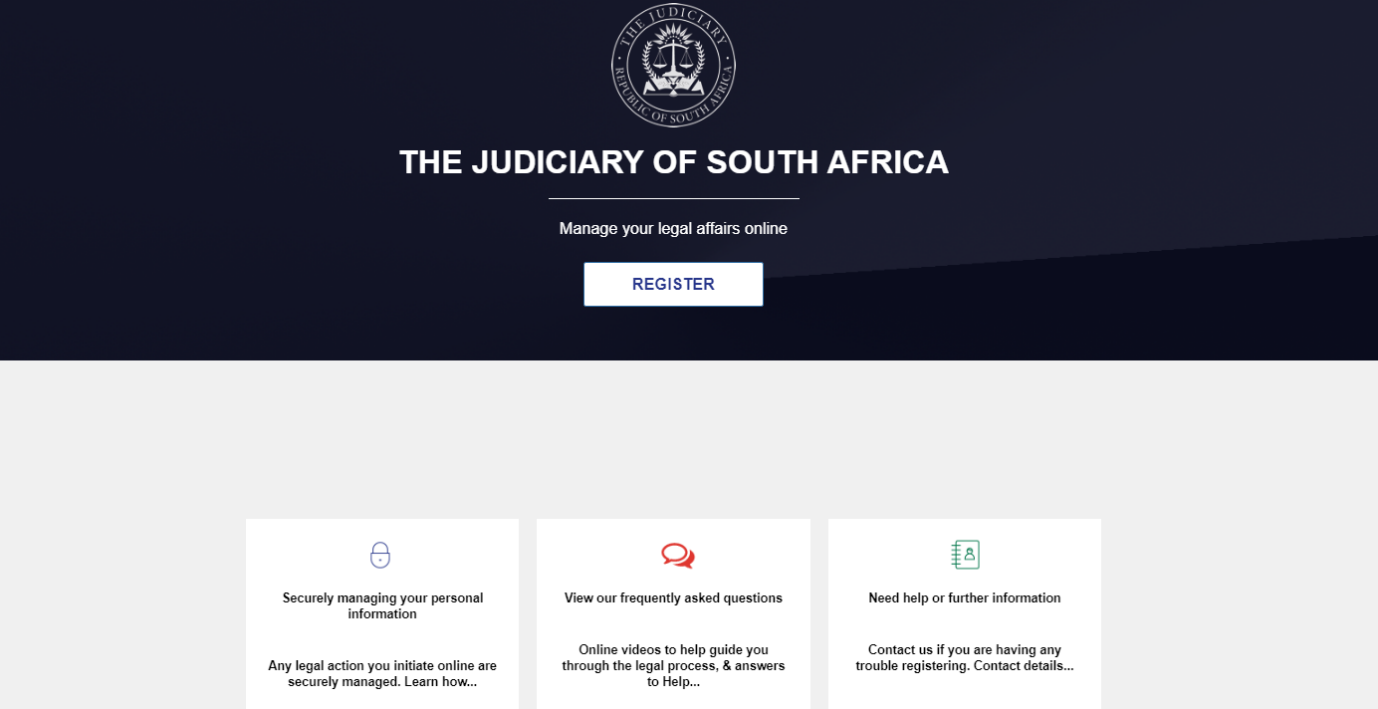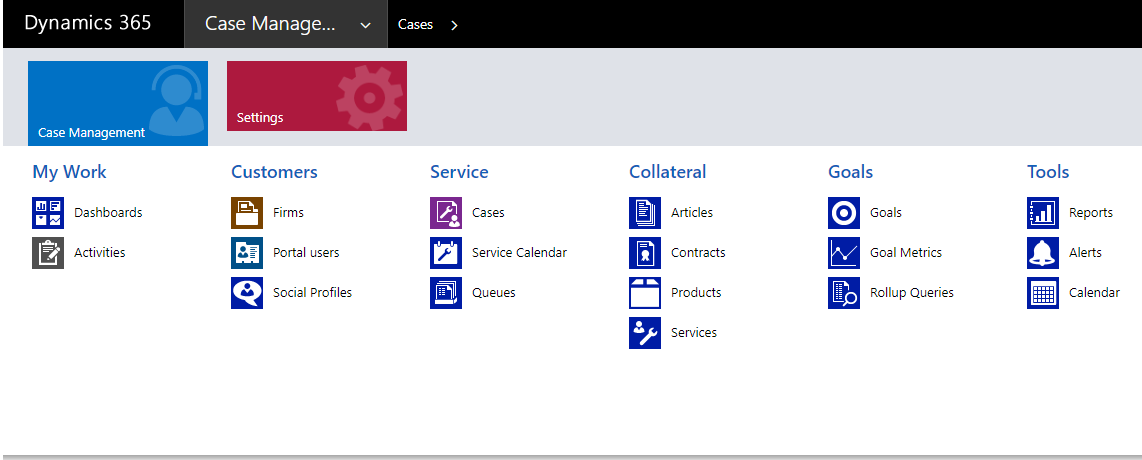COURT ONLINE
The COURT ONLINE System FE portal shall be a web based solution that LFs/ Litigants shall access from their PCs via the Internet.

Figure 1: COURT ONLINE PORTAL FRONT END SCREEN
| Step | Process Description |
| 1 | A LF/ Litigant needs to register in order to gain access. LF/ Litigant need to create a once-off online profile so that they can access the COURT ONLINE system |
| 2 | A LF/ Litigant must enter their ID as part the online profile creation, which shall be verified with the home affairs system along with all other information so that citizenship can be verified |
| 3 | A LF/ Litigant must enter their practice number as part of the online profile creation, which shall be verified against the Legal Practice Council database of registered Legal Practitioners. |
| 4 | Upon registration, the LF/ Litigant shall register their digital signature on the system. |
| 5 | The FE shall provide LFs/ Litigants with an online case file through which they can file and view the documents which have been filed by them, served on them or any messages received from the Courts. |
| 6 | Upcoming hearing dates are also pushed through the FE at the law firm level and at the case level. |
| 7 | Documents shall be transmitted in a Portable Document Format (PDF). |
| 8 | To file or serve a document, the LF/ Litigant has to fill up the appropriate online template in the FE and attach the document to be filed or served in PDF format. |
| 9 | The entire submission may consist of one or several documents and this shall be digitally signed. |
| Step | Process Description |
| 1 | The business logic of the courts shall be built into this application. |
| 2 | It encapsulates workflow routing, document management and statistical report generation; documents are stored in a document management system. |
| 3 | An electronic case file shall allow the easy retrieval of documents; and present information relating to a case file within a single easy to use interface. |

Figure 2: Case Management Screen
| # | Process Description |
| 1 | Case Registration Management – This process comprises tracking and management of case registrations with the court including the generation of case numbers to be applied to the registered cases. |
| 2 | Case Type Management – This process comprises the validation and maintenance of all cases registered with the courts to ensure the correct process / value chain is chosen. |
| 3 | Case Flow Management and Monitoring – This process comprises the assignment, tracking and updating of cases within the court with their respective latest statuses/ court outcome. |












